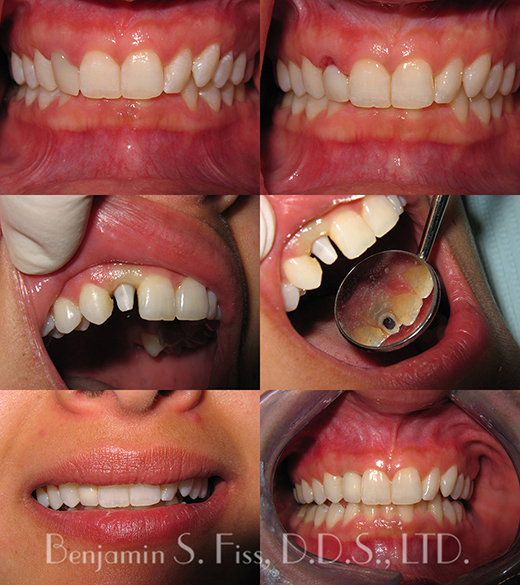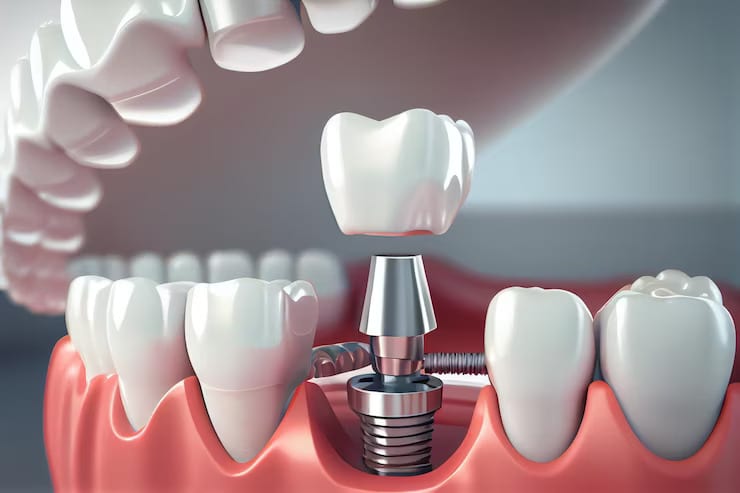Premier Dental Galena OH Frequently Asked Questions About Dental Implants
Premier Dental Galena OH Frequently Asked Questions About Dental Implants
Blog Article
Smile Care Galena OH Common Dental Implant Problems and How to Avoid Them
Dental implants have revolutionized restorative dentistry, offering a reliable alternative to traditional strategies for changing missing teeth. The integration of dental implants with the jawbone is a fancy organic process why not try this out known as osseointegration. This course of not only anchors the implant securely but in addition best site helps maintain jawbone health, preventing Click Here the bone loss usually associated with missing teeth.
The dental implant itself is usually made from titanium, a biocompatible material that the body accepts. When an implant is positioned in the jaw, it is designed to carefully mimic the basis of a natural tooth, which is essential for efficient integration. The titanium surface encourages the expansion of bone cells, enabling the jawbone to bond with the implant over time.
Dental Care New Albany OH Understanding the Cost of Dental Implants (2024 Edition)

Several stages represent the osseointegration course of. Initially, when the implant is surgically positioned into the jaw, a healing period is required for the surrounding bone to begin transforming. During this time, the bone grows across the implant, making a solid and stable foundation. This healing time can differ, usually lasting a number of weeks to a few months, depending on various elements, including the person's general health and the specific location of the implant.
The function of surrounding bone quality is essential. High-density bone typically offers a greater surroundings for osseointegration in comparison with lower-density bone. Specialists usually consider the quality and amount of bone before the implant placement to discover out the most effective plan of action, which can contain bone grafting procedures in circumstances of insufficient bone quantity. Grafting enhances the probabilities of successful integration by creating a more sturdy base for the implant.
The biological mechanisms behind osseointegration involve various mobile activities. Osteoblasts, the cells answerable for bone formation, migrate to the implanted area and begin to put down new bone material. Simultaneously, the surface of the titanium implant undergoes modifications that facilitate this bonding process. Some newer implant designs incorporate floor modifications to additional improve organic integration.
Dental Center Galena OH Affordable Dental Implants: Finding the Best Value
Throughout the integration course of, the role of blood supply can't be overstated. An sufficient blood provide nourishes the bone and ensures the right functioning of the cells concerned within the therapeutic and integration process. Improved blood circulate results in quicker therapeutic and better outcomes, which is why surgical methods and aftercare typically prioritize sustaining or enhancing blood circulation to the location of the implant.
Improvements in surgical strategies also contribute significantly to the success charges of dental implants - Dental Care Associate Pataskala OH. Minimally invasive methods and guided implant surgery allow for extra precise placement of implants, reducing trauma to the encircling tissues and potentially rushing up the healing time. The less trauma skilled by the jawbone can lead to a more favorable surroundings for osseointegration
Pediatric Dentist Hartford OH What Are Dental Implants? Types, Benefits, and More

How a person maintains their oral hygiene after receiving an implant can significantly influence integration success. Proper care around the implant site helps prevent infections, which might disrupt the therapeutic course of. Regular dental check-ups are also very important to monitor the health of both the implant and the encircling gum and bone tissues.
Long-term success with dental implants is often linked to elements such as life-style selections. Patients who smoke or have uncontrolled diabetes might expertise lower rates of osseointegration. These conditions intervene with therapeutic and blood provide, making it crucial for people contemplating implants to discuss their health history with their dentist.
After the successful integration of the implant, the next section involves putting the prosthetic restoration, corresponding to a crown. The last restoration should match comfortably and functionally combine with the existing dentition. Mono Dental Implants Pataskala OH. Proper alignment and occlusion play important roles in how nicely the implant will perform over time
Dentists Columbus OH Dental Implants for Seniors: Considerations and Benefits
Dental implants present an enduring solution that helps preserve the integrity of the jawbone. When a tooth is lost, the bone that once anchored its root begins to deteriorate. Implants stimulate the bone equally to natural teeth, triggering the jaw to hold up its density and energy. This stimulation is essential for preventing the sunken facial appearance that often accompanies tooth loss.
In conclusion, the combination of dental implants with the jawbone involves a complex interplay of organic and mechanical factors. Understanding the osseointegration course of can empower individuals to make informed selections about their dental health. By appreciating the significance of selecting a skilled dental professional and adhering to post-operative care, sufferers can obtain optimal outcomes and revel in restored operate and aesthetics for many years to come.

- Dental implants mimic the structure of natural teeth and provide a steady basis by integrating with the jawbone through a course of referred to as osseointegration.
- The biocompatibility of titanium, generally used for dental implants, performs an important role in promoting successful bonding with bone tissue.
- Osseointegration usually begins within a couple of weeks post-surgery, with the implant surface steadily turning into enveloped by bone cells.
- The mechanical stability of implants is enhanced by their floor roughness, which encourages bone development and improves the integration process.
- Immediate loading of implants may be feasible in sure circumstances, depending on bone density and the patient’s overall dental health.
- Over time, the jawbone responds to the presence of an implant by present process reworking, contributing to the long-term success of the procedure.
- Factors similar to oral hygiene, smoking habits, and systemic medical conditions can significantly impression the integration means of dental implants.
- Regular follow-ups and imaging strategies, similar to X-rays, may help monitor the success of osseointegration and detect potential complications early.
- The preservation of surrounding bone structure is enhanced by the stimulation provided by dental implants, which might help prevent bone loss in adjacent areas.
- Successful integration not solely restores performance to the tooth but in addition contributes considerably to the aesthetics of the affected person's smile and facial structure.undefinedWhat are dental implants and how do they work with the jawbone?undefinedDental implants are titanium posts surgically inserted into the jawbone to function synthetic tooth roots. Once positioned, they bear a process called osseointegration, the place the jawbone naturally fuses with the implant, making a steady foundation for the replacement tooth.
How does osseointegration occur?undefinedOsseointegration is a biological process the place bone cells grow and attach to the floor of the dental implant. This usually takes several months, during which the implant becomes firmly anchored in the jawbone, ensuring power and stability for the bogus tooth.
Johnstown Dental Alexandria OH Permanent Dental Implants
What factors affect the success of dental implant integration?undefinedKey factors include the quality and amount of the jawbone, the affected person's total health, and oral hygiene practices. Adequate bone density is essential, as insufficient bone may impede successful integration.
Is the pain during dental implant placement significant?undefinedMost patients report minimal discomfort in the course of the process, as native anesthesia is used. Post-operative pain is mostly manageable with over-the-counter pain reduction drugs, and most discomfort subsides within a number of days.
How long does the mixing process take?undefinedTypically, osseointegration takes about three to six months. However, this can range based mostly on individual healing processes and the particular conditions of the jawbone.
Can anybody get dental implants?undefinedMost individuals are candidates for dental implants; nonetheless, sure conditions similar to uncontrolled diabetes or severe gum disease could have an result on eligibility. A thorough evaluation by a dental skilled is important to determine suitability.
Dental Care Associate Granville OH Step-by-Step Guide to Dental Implant Procedures
What could be carried out if there isn't enough jawbone for integration?undefinedIf there is insufficient bone, procedures like bone grafting can be carried out to reinforce the jawbone. Once the graft heals, dental implants can then be placed, allowing for profitable integration.
Are there long-term care concerns after getting dental implants?undefinedYes, sustaining excellent oral hygiene is important for the longevity of dental implants. Regular dental check-ups and cleanings additionally help prevent complications and make sure the ongoing health of the surrounding bone and gum tissue.
Premier Dental Hartford OH Full Mouth Dental Implants
How do dental implants evaluate to different tooth replacement options?undefinedDental implants are often considered superior to dentures and bridges as a outcome of their durability, stability, and the preservation of jawbone health. Unlike other options, implants fuse with the jawbone, which helps keep bone density and facial structure.
Report this page